













The magazine of the art-form of the photo-essay
“A free, really high quality photo-essay magazine. Fabulous!”
Stephen Fry. British actor, writer and film & documentary maker

Nov 2014 back issue



by Esther Horvath
Behind only Australia and New Zealand, Cape Cod has the highest rates in the world of marine mammals and sea
turtles being stranded. For this reason, it is also called the 'Deadly Bucket'.
In this area, 85% of the stranded sea turtles are the most critically endangered Kemp’s Ridley turtles. The stranding of
the sea turtles happens mostly between October and January, and the extreme weather plays one of the main roles in
causing this phenomenon to occur. Young, old or injured species have difficulty leaving Cape Cod’s hook-shaped
landmass before the water starts to become cold. Getting lost in 50 degrees Fahrenheit water can cause sea turtles to
become hypothermic and unable to function. They start to float on the surface, unable to dive down to feed, possibly
leading to a slow death. In the event of high winds, coupled with extreme tides, these vulnerable animals are often
pushed closer to shore, leaving them stranded when the tide falls.
The Marine Animal Rescue Team at the New England Aquarium specializes in rescuing, and rehabilitating stranded sea
turtles in the Cape Cod area before hopefully releasing them back into the ocean. The rehabilitation of the rescued sea
turtles can take many months. As they are ready to leave the facility the team releases them back to the ocean in
Florida or in summer on Long Island, NY or on the east side of Cape Cod as long as the water temperature is at least
70 degrees.
The team handles each turtle with extreme care, as this species is so threatened on planet Earth. Each of them
receives a lot of attention and patience during their treatment along with appropriate nutrition. The feeding can be a
tongue feeding in their critical period to make sure they eat the needed portion of protein.
Another important activity of the rescue team is researching these wild sea turtles in the ocean. The results help the
team increase their understanding of the medical management of stranded sea turtles. Also, they are continually
working to improve the techniques that increase the success of the rehabilitation process.
“The mission of the Rescue Team is to provide the highest quality care to sick or injured sea turtles with the goals of
releasing every turtle back into the ocean and advancing the education and conservation of sea turtles. My hope for
sea turtles is that their populations increase and we can help avoid their extinction.“ Connie Merigo, Marine Animal
Rescue Team, Rescue Department Manager/ Senior Biologist.
The team successfully released 1400 sea turtles in the last 20 years. Of that 1400, approximately 1200 of which were
of the Kemp’s Ridley variety, which is a high percentage of its total population.
The Marine Animal Rescue Team's goal is very clear: to rescue sea turtles, which have lived on this planet for more
than 150 million years and insure their survival for generations to come.
I documented the rehabilitation of the sea turtles at facility of the Marine Animal Rescue Team in Quincy, MA and
followed the team from Quincy, MA to Little Talbot Island, Florida, where 31 sea turtles were released back to the ocean
on 22 April, on the International Earth day.
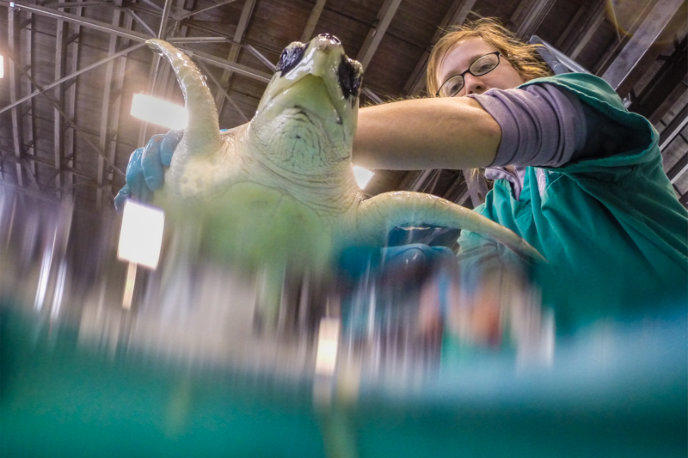
Sarah Mclellan taking out a Kemp's Ridley turtle from the pool for an exam at the New England Marine Animal Rescue
Team Facility. 02.26.2014, Quincy, MA.
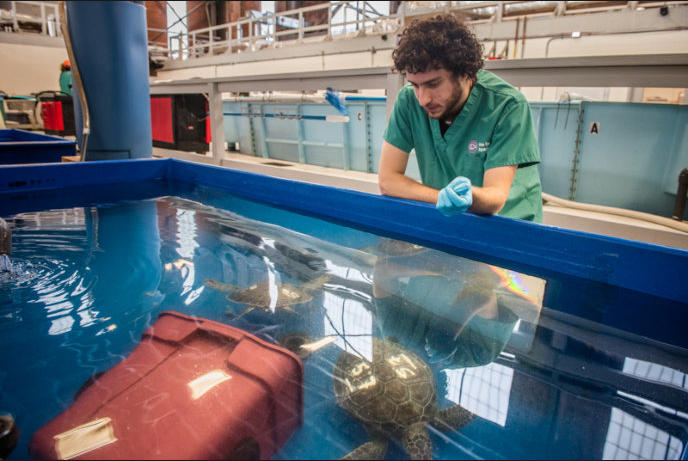
Volunteer Eran Hornick watching green sea turtles’ behaviors after their feeding. 02.28. 2014, Quincy, MA.
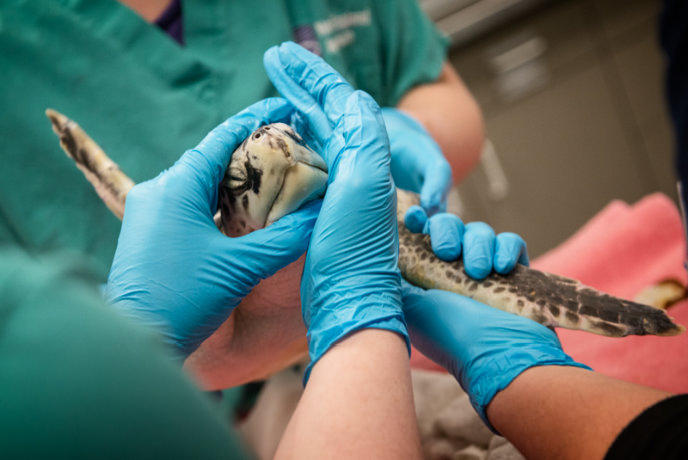
Comforting a Kemp's Ridley turtle during it's examination. 02.28. 2014, Quincy, MA.
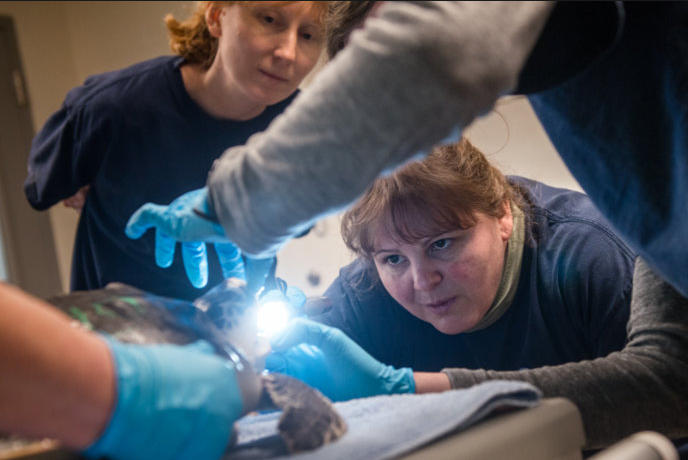
Biologist Julika Wocial (L), Connie Merigo ( R) Rescue Department Manager & Senior Biologist examine a Kemp's
Ridley sea turtle at the New England Marine Animal Rescue Team Facility. 01.03.2014, Quincy, MA.
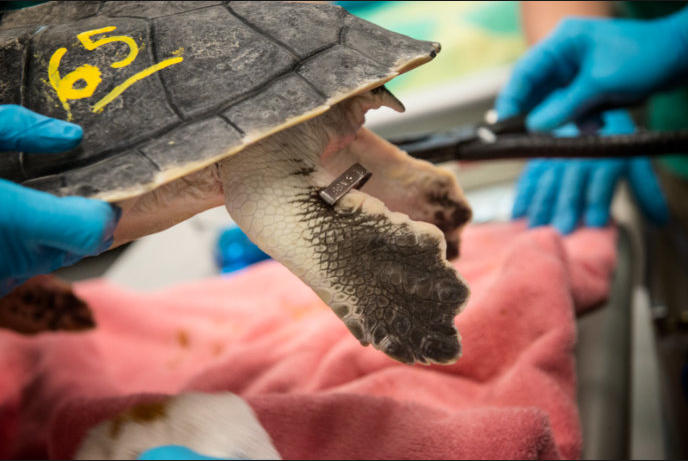
Each sea turtle has a facility identification number painted on their shell. Number 65 Kemp's Ridley sea turtle received
his international identification tag. This identification number is saved in an international database. With this number, all
the treatments and rehabilitation information are saved. 03.03.2014, Quincy, MA.
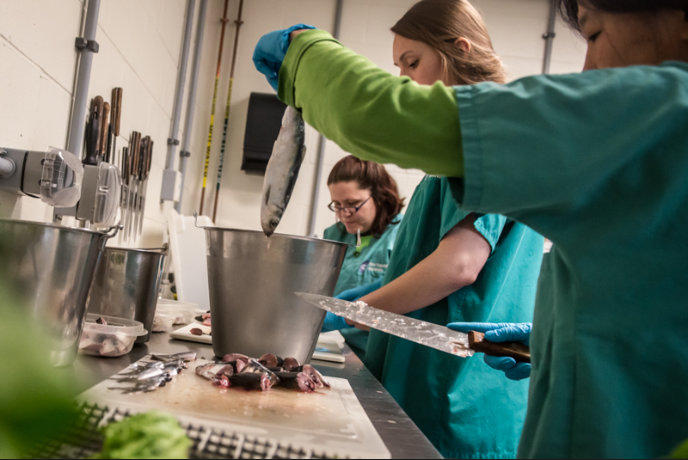
Volunteer Elise Blanken (R), intern Elizabeth Linske and volunteer Sarah Capozzoli (L) prepare fish for the feeding of
the sea turtles. 02.28.2014, Quincy, MA.
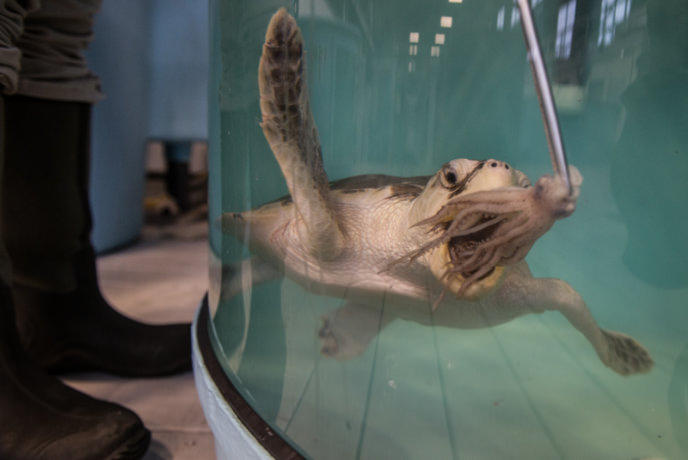
During the rehabilitation some of the sea turtles don't have an appetite and therefore, must be hand-fed. Kemp's Ridley
#77 has a stomach operation and hopefully can leave the facility in the summer of 2014. 02.28.2014, Quincy, MA.
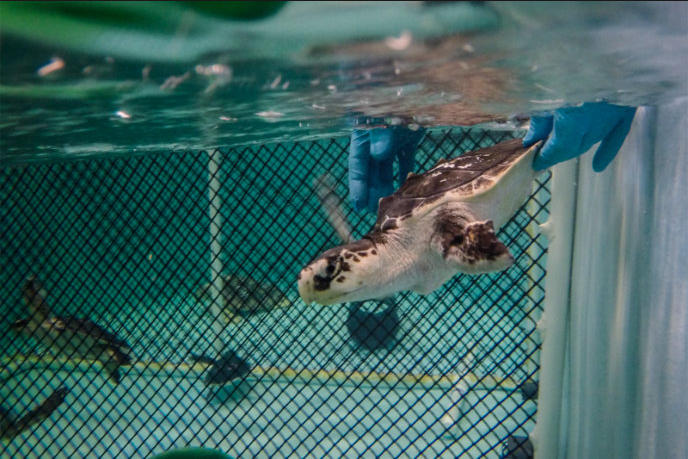
The left flipper of #007 Kemp's Ridley sea turtle had to be amputated because of it's bad condition after he arrived at
the facility. After a short time, he learn . ed how to balance in the water. He is ready to be released back into the ocean
in Florida 02.28.2014, Quincy, MA, Esther Horvath
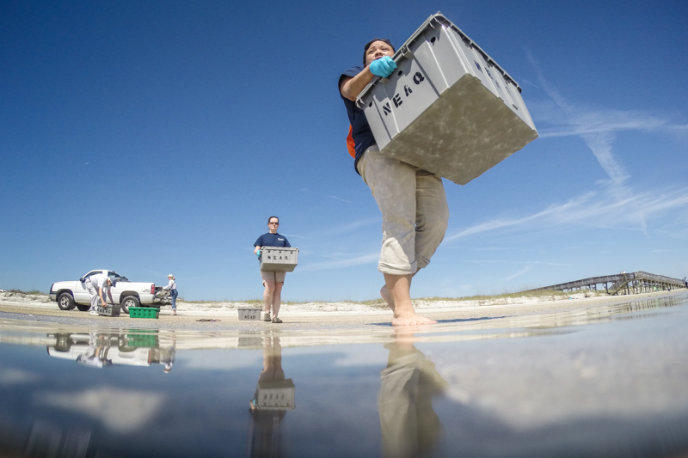
31 rescued and rehabilitated sea turtles arrive to the beach on Little Talbot Island, Florida where they are going to be
released back to the ocean. Volunteer Nicola Wong ( R) and Katie Yungman New England Aquarium staff person ( L)
carry the boxes with sea turtles to the beach. 04.22.2014, Little Talbot Island, Flordia.
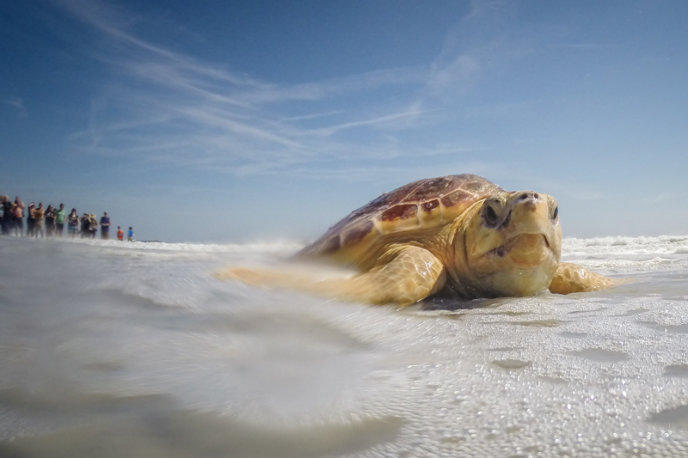
Loggerhead sea turtle on the beach before he disappears into the ocean at Little Talbot Island. 04.22.2014, Little
Talbot Island, Florida.
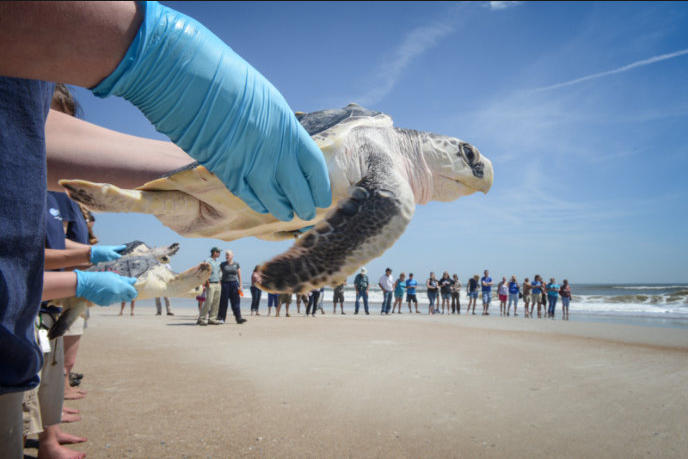
New England Aquarium Marine Animal Rescue Team releases 31 rescued and rehabilitated sea turtles at Little Talbot
Island in Flordia. 27 most entdangered Kemp's Ridley, 2 green and 2 loggerhead sea turtles. 04.22.2014, Little Talbot
Island, Florida.
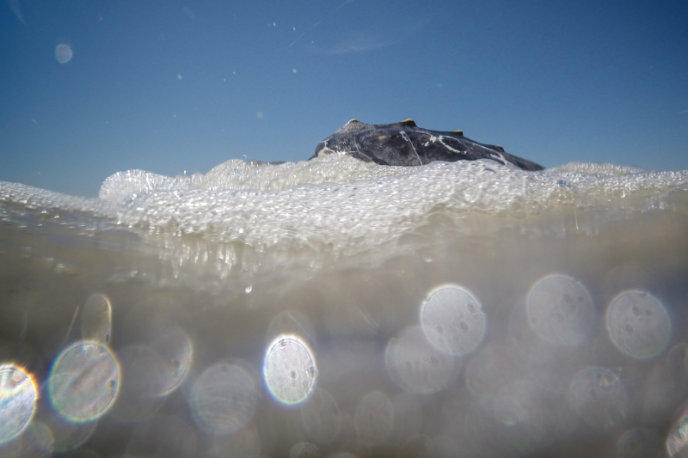
A Kemp's Ridley sea turtle, which is one of the most endagered of all sea turtles, disappears into the ocean at Little
Talbot Island in Florida after his 6 month rehabilitation at Marine Animal Rescue Team Rehabilitation. 04.22.2014, Little
Talbot Island, Florida.












